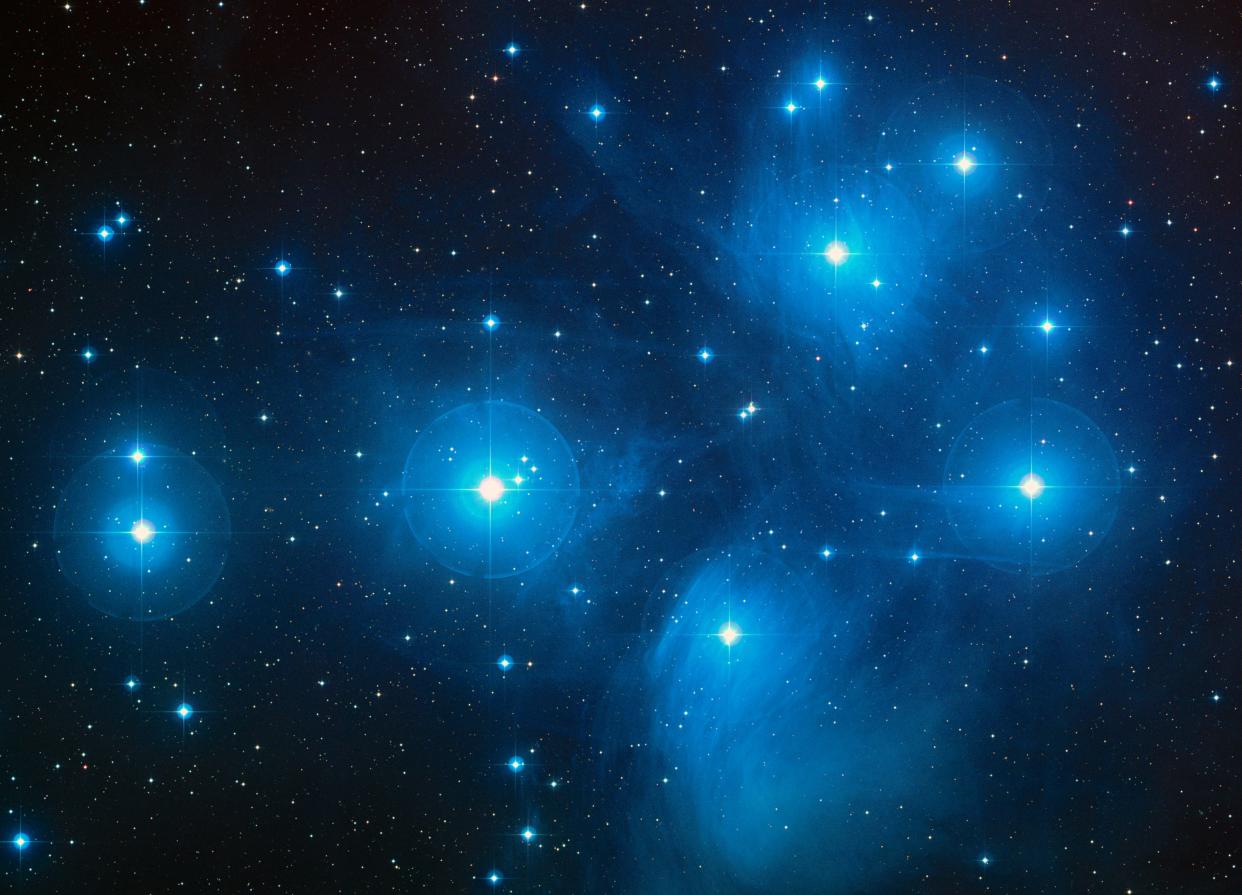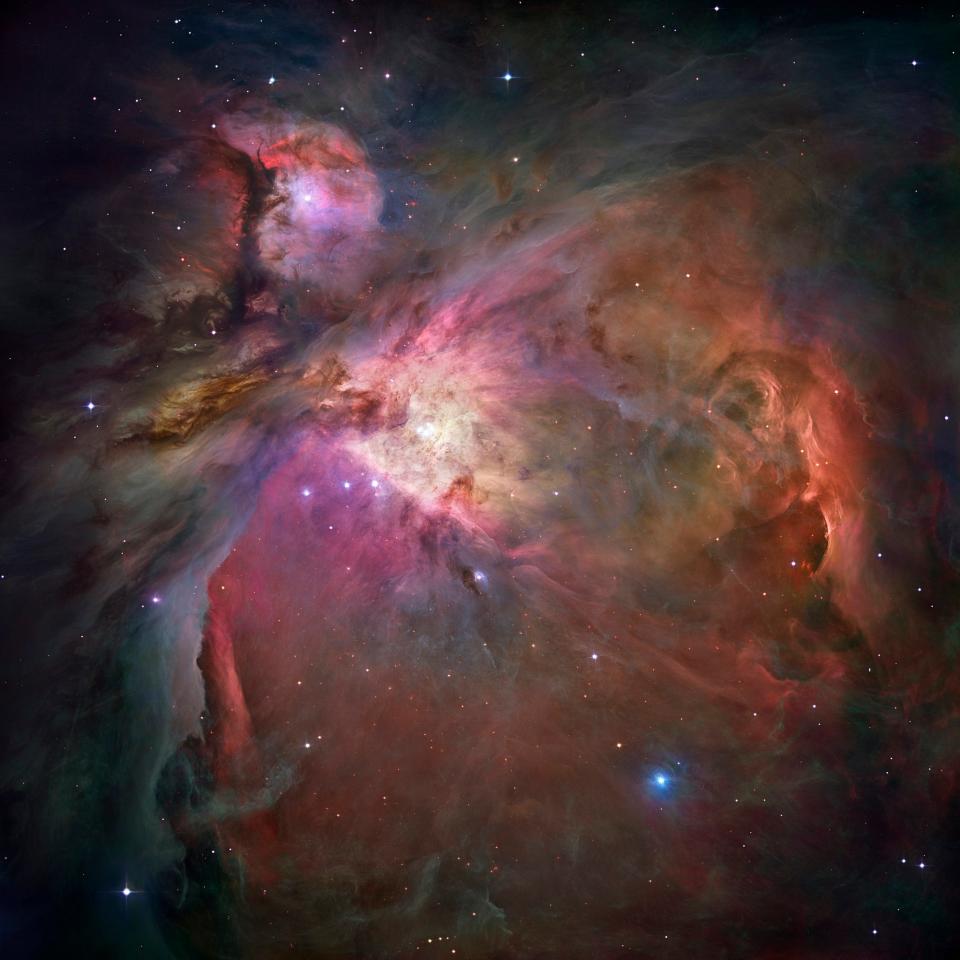Stelliferous: Watching the Winter Hexagon in January and February

Since 1963, six-time Grammy nominee Andy Williams, and countless other singers, have told us that the December holiday season “is the most wonderful time of the year.” For astronomers in Southwest Florida, however, the most wonderful time of the year is January and February because the rainy season is over, so skies are clearer, and nights are cooler and less buggy.
And the most wonderful time of that most wonderful time of the year for astronomers will be the nights around the new moon of Feb. 1, because the less moon you have, the less light you have and the more celestial stuff you can see.
A great naked-eye target in January and February is the Winter Hexagon, a six-sided asterism formed by six bright stars. Starting with Sirius (the brightest star in the sky at -1.44 magnitude – remember, the lower the magnitude, the brighter the star) and going clockwise in the hexagon, we have Procyon (the eighth brightest star in the sky, magnitude +0.4), Pollux (17th brightest star in the sky, magnitude +1.16), Capella (sixth brightest, magnitude +0.08), Aldebaran (14th brightest, magnitude +0.87), and Rigel (seventh brightest, magnitude +0.18).
Of course, for a little added visual oomph, without getting into the big-bucks realm of telescopes, a pair of good binoculars will make the area in and around the Winter Hexagon really pop.
Just to the northwest of the Winter Hexagon, for example, is the dazzling Pleiades star cluster, also known as the Seven Sisters. With the naked eye, the Pleiades looks like a tiny Big Dipper. But with a pair of binoculars, dozens of the star cluster’s hundreds of stars come into view.
Back on the northwest edge of the hexagon, you’ll find the V-shaped Hyades star cluster, which makes up the face of the bull in the constellation Taurus. As with the Pleiades, you can enjoy the beauty of the Hyades with your unaided eyes, but binoculars take you so much deeper into the star cluster.
Although Aldebaran, one of the stars marking the Winter Hexagon, is on the V of the Hyades (this red giant star represents the fiery right eye of Taurus the bull), it’s not actually part of the star cluster: The Hyades are 151 light-years away, and Aldebaran is a mere 65 light-years away. On top of that, Aldebaran formed more than 6 billion years ago, long before the 625-million-year-old Hyades were born.
Moving back inside the Winter Hexagon, we find a glittering treasure trove that includes a large swath of our home galaxy, the Milky Way. At this time of year, the Earth is facing the outer edge of the Milky Way, so the galaxy is not as bright as during the summer when we face the galactic center. Still, under a dark sky, you can see the Milky Way’s faint glow with the naked eye. Once again, with binoculars, you’ll see a lot more detail.

Dominating this portion of the winter sky, and lying within the Winter Hexagon, is Orion the Hunter. With its belt of three bright, evenly spaced stars, Orion is one of the most easily identified of all constellations. Whenever you go out at night during the winter, there it is, like an old friend, every night, slowly marching across the sky from east to west.
No matter how often you see this big, recognizable constellation, it never gets boring.
It’s like a favorite movie, such as Casablanca: No matter how often you see it, you never get tired of hearing Louis (Claude Raines) say, “Major Strasser has been shot. Round up the usual suspects” or Rick (Humphrey Bogart) tell Ilsa (Ingrid Bergman), “We’ll always have Paris.” And who could ever get tired of hearing Sam (Dooley Wilson) sing, “As Time Goes By?"
One thing that makes Orion Casablanca-like is that it’s the home of the Orion Nebula, which is part of the asterism just below Orion’s Belt known as Orion’s Sword. About 1,700 light-years from Earth, the Orion Nebula is a stellar nursery, where stars are actually being born even as you look at it. This is another naked-eye object that really comes to life through binoculars.
Also in Orion is the red supergiant star Betelgeuse, whose name is Arabic for “armpit of the great one.” Betelgeuse’s magnitude typically varies from 0.0 to +1.6, but in late 2019, it got very dim very quickly, leading astronomers to think that it might soon go supernova. That would have been the astronomy event of a lifetime — in 1054, a bright object, with an estimated magnitude of -5, appeared in the constellation Taurus, evidence of a star that had exploded some 5,500 years before; the light remained visible for two years, and today the remnants of that supernova are known as the Crab Nebula.
If Betelgeuse were to go supernova, it would be a heck of a show and an astronomer’s dream event.
However, researchers have determined that Betelgeuse’s dimming was not a prelude to a massive, bucket-list explosion, but something much more mundane: The armpit of the great one had ejected a blob of gas into space; then a small patch of the star’s surface cooled, and the cooler local temperature caused the gas to condense into a cloud, which shaded Betelgeuse and made it look dimmer than it really was.
Looks like no Betelgeuse-supernova parties in the near future.
Obviously, winter is a great time for astronomy in Southwest Florida, so, go out at night (with or without binoculars or a telescope) and have a look at the Winter Hexagon, the Pleiades, the Hyades, and the Milky Way.
Or, if nothing else, just tip your hat to our old friend Orion the Hunter and say, “Here’s looking at you, kid.”

Howard Hochhalter is director of The Planetarium at The Bishop Museum of Science and Nature. Each month, he hosts Stelliferous, a live discussion at the Museum of what’s happening in our night skies and in the world of astronomy. Visit The Bishop online at www.BishopScience.org to register or to learn about other events and activities at the Museum.
This article originally appeared on Sarasota Herald-Tribune: Stelliferous: Watching the Winter Hexagon in January and February

